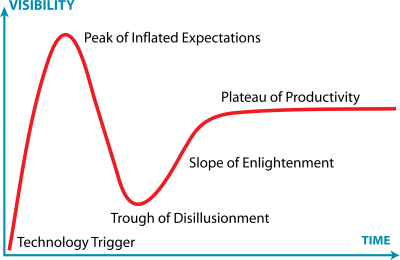Someone asked me on Twitter
Is there a trick to make an singular (non-invertible) matrix invertible?
The only response I could think of in less than 140 characters was
Depends on what you’re trying to accomplish.
Here I’ll give a longer explanation.
So, can you change a singular matrix just a little to make it non-singular? Yes, and in fact you can change it by as little as you’d like. Singular square matrices are an infinitely thin subset of the space of all square matrices, and any tiny random perturbation is almost certain to take you out of that thin subset. (“Almost certain” is actually a technical term here, meaning with probability 1.)
Adding a tiny bit of noise to a singular matrix makes it non-singular. But why did you want a non-singular matrix? Presumably to solve some system of equations. A little noise makes the system go from theoretically impossible to solve to theoretically possible to solve, but that may not be very useful in practice. It will let you compute a solution, but that solution may be meaningless.
A little noise makes the determinant go from zero to near zero. But here is an important rule in numerical computation:
If something is impossible at 0, it will be hard near zero.
“Hard” could mean difficult to do or it could mean the solution is ill-behaved.
Instead of asking whether a matrix is invertible, let’s ask how easy it is to invert. That is, let’s change a yes/no question into a question with a continuum of answers. The condition number of a matrix measures how easy the matrix is to invert. A matrix that is easy to invert has a small condition number. The harder it is to invert a matrix, the larger its condition number. A singular matrix is infinitely hard to invert, and so it has infinite condition number. A small perturbation of a singular matrix is non-singular, but the condition number will be large.
So what exactly is a condition number? And what do I mean by saying a matrix is “hard” to invert?
The condition number of a matrix is the norm of the matrix times the norm of its inverse. Defining matrix norms would take too long to go into here, but intuitively it is a way of sizing up a matrix. Note that you take the norm of both the matrix and its inverse. A small change to a matrix might not change its norm much, but it might change the norm of its inverse a great deal. If that is the case, the matrix is called ill-conditioned because it has a large condition number.
When I say a matrix is hard to invert, I mean it is hard to do accurately. You can use the same number of steps to invert a matrix by Gaussian elimination whether the matrix has a small condition number or a large condition number. But if the matrix has a large condition number, the result may be very inaccurate. If the condition number is large enough, the solution may be so inaccurate as to be completely useless.
You can think of condition number as an error multiplier. When you solve the linear system Ax = b, you might expect that a little error in b would result in only a little error in x. And that’s true if A is well-conditioned. But a small change in b could result in a large change in x if A is ill-conditioned. If the condition number of A is 1000, for example, the error in x will be 1000 times greater than the error in b. So you would expect x to have three fewer significant figures than b.
Note that condition number isn’t limited to loss of precision due to floating point arithmetic. If you have some error in your input b, say due to measurement error, then you will have some corresponding error in your solution to Ax = b, even if you solve the system Ax = b exactly. If the matrix A is ill-conditioned, any error in b (rounding error, measurement error, statistical uncertainty, etc.) will result in a correspondingly much larger error in x.
So back to the original question: can you make a singular matrix non-singular? Sure. In fact, it’s hard not to. Breathe on a singular matrix and it becomes non-singular. But the resulting non-singular matrix may be useless. The perturbed matrix may be theoretically invertible but practically non-invertible.
So here’s a more refined question: can you change a singular matrix into a useful non-singular matrix? Yes you can, sometimes, but the answer depends very much on the problem you’re trying to solve. This is generally known as regularization, though it goes by different names in different contexts. You use knowledge of your domain beyond the specific data at hand to guide how you change your matrix.
More linear algebra posts

